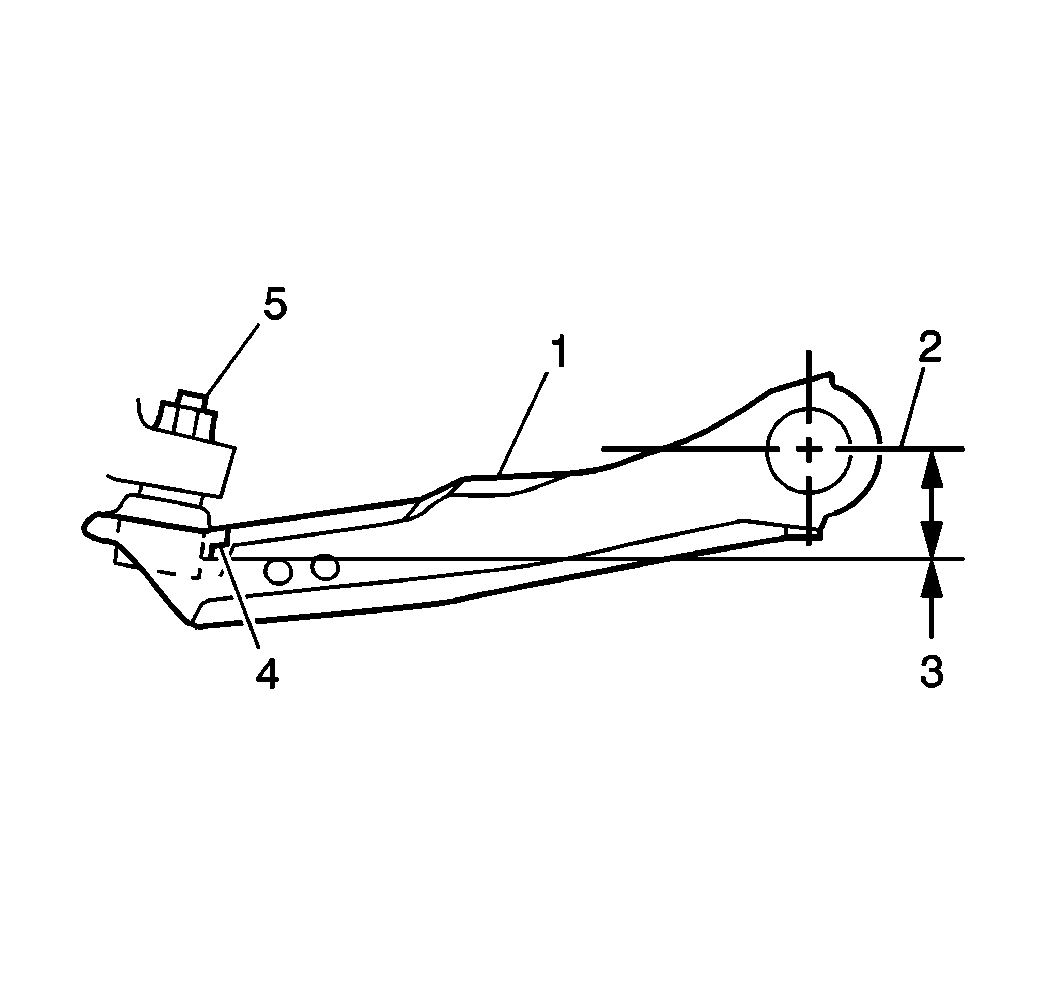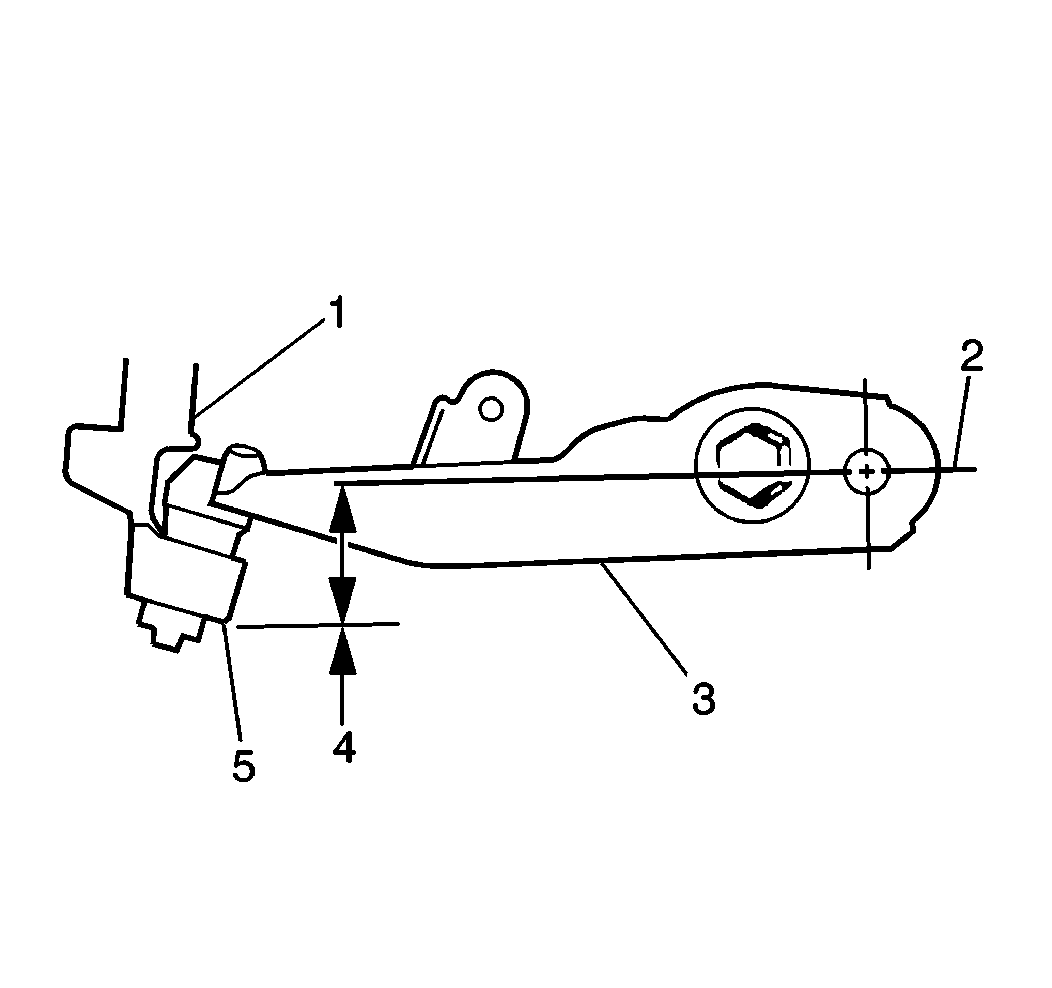For 1990-2009 cars only
Preliminary Alignment Inspection C Model
- Before making any adjustments affecting the caster, the camber, or the toe-in, inspect the front end.
- Inspect the tires for the proper inflation pressure. Refer to Tire Inflation Description in Tires and Wheels.
- Inspect the front wheel bearing for proper adjustment. Refer to Wheel Bearing Adjustment in Front Suspension.
- Correct any excessive looseness before adjusting the ball joints, the tie rod ends, and the relay rods. Refer to Steering Linkage Inspection in Steering Linkage.
- Inspect the wheels and tires for runout. Refer to Tire and Wheel Runout Measurement in Vibration Diagnosis and Correction.
- The correct specification is 95.0 ± 6.0 mm. If not within specifications, make the correction before adjusting the caster.
- Inspect the steering gear for looseness at the frame.
- Inspect the shock absorbers for leaks or noticeable noise. Refer to Shock Absorber Replacement in Front Suspension.
- Inspect the control arms or the stabilizer shaft attachments for looseness. Refer to Stabilizer Shaft Replacement in Front Suspension and Axle.
- Inspect the alignment equipment.
- Inspect the level of the vehicle.
- Inspect for excess drag or poor return of the steering wheel due to stiff or rusty suspension or linkage components.

Follow the manufacturer's instructions.
The vehicle must be on a level surface fore and aft and side to side.
Preliminary Alignment Inspection K 1, 2 Model
- Inspect the tires for the proper inflation pressure. Refer to Tire Inflation Description in Tires and Wheels.
- Inspect the front wheel bearing for proper adjustment. Refer to Wheel Bearing Adjustment Front Suspension.
- Correct any excessive looseness before adjusting the following parts:
- Inspect the wheels and tires for runout. Refer to Tire and Wheel Runout Measurement in Vibration Diagnosis and Correction.
- The correct specification is 157.0 ± 6.00 mm. If not within specifications, make the correction before adjusting the caster.
- Inspect the steering gear for looseness at the frame.
- Inspect the shock absorbers for leaks or noticeable noise. Refer to Shock Absorber Replacement in Front Suspension.
- Inspect the control arms or the stabilizer shaft attachments for looseness. Refer to Stabilizer Shaft Replacement in Front Suspension.
- Inspect the alignment equipment.
- Inspect the level of the vehicle.
- Inspect for excess drag or poor return of the steering wheel due to stiff or rusty suspension or linkage components.
Important: Before making any adjustments affecting the caster, the camber, or the toe-in, inspect the front end.
| • | The ball joints |
| • | The tie rod ends |
| • | The relay rods. |
| • | Refer to Steering Linkage Inspection in Steering Linkage. |

Follow the manufacturer's instructions.
The vehicle must be on a level surface fore and aft and side to side.
Preliminary Alignment Inspection K Model
- Inspect the tires for the proper inflation pressure. Refer to Tire Inflation Description in Tires and Wheels.
- Inspect the front wheel bearing for proper adjustment. Refer to Wheel Bearing Adjustment in Front Suspension.
- Correct any excessive looseness before adjusting the following parts:
- Inspect the wheels and tires for runout. Refer to Tire and Wheel Runout Measurement in Vibration Diagnosis and Correction.
- The correct specification is 10906 ± L65 and 20906 ± C6P ± 3 145.0 ± 6.0 mm. If not within specifications, make the correction before adjusting the caster.
- Inspect the steering gear for looseness at the frame.
- Inspect the shock absorbers for leaks or noticeable noise. Refer to Shock Absorber Replacement in Front Suspension.
- Inspect the control arms or the stabilizer shaft attachments for looseness. Refer to Stabilizer Shaft Replacement in Front Suspension.
- Inspect the alignment equipment.
- Inspect the level of the vehicle.
- Inspect for excess drag or poor return of the steering wheel due to stiff or rusty suspension or linkage components.
Important: Before making any adjustments affecting the caster, the camber, or the toe-in, inspect the front end.
| • | The ball joints |
| • | The tie rod ends |
| • | The relay rods |
| • | Refer to Steering Linkage Inspection in Steering Linkage. |

Follow the manufacturer's instructions.
The vehicle must be on a level surface fore and aft and side to side.
